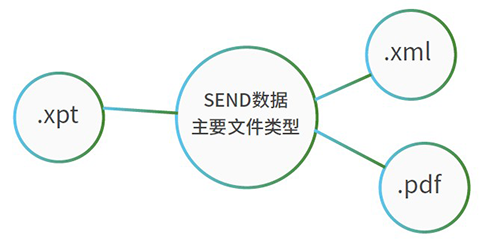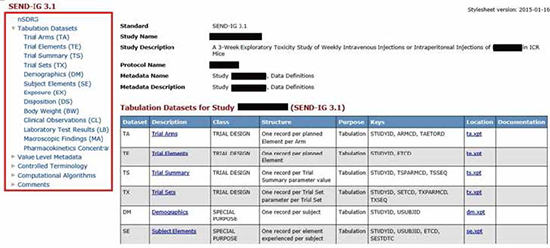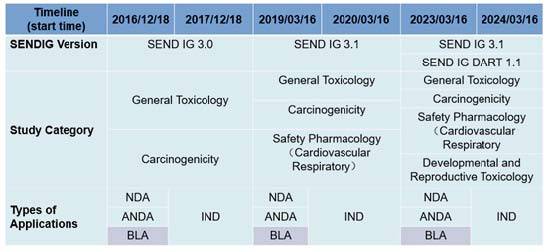현재 위치:홈 > 뉴스현황 > Our Events > Transformation of ne...
저자:medicilon 업로드:2021-10-10 조회수:

In recent years, China's pharmaceutical industry has developed rapidly. With the encouragement and support of national policies, the research and development of new and generic drugs in China has grown significantly. With this momentum of development, Medicilon’s pharmaceutical R&D has not only brought about earth-shaking changes to China’s pharmaceutical market, but has also received extensive attention from the global pharmaceutical market. In 2020, the number of drugs approved by the FDA reached 96 ANDAs, with a total of 81 active ingredients, coming from 26 Chinese pharmaceutical companies and their subsidiaries. Among them, 12 Chinese innovative drugs have obtained FDA breakthrough therapy designation or fast track designation.
SEND, Standard for Exchange of Nonclinical Data, is the standard conversion of non-clinical trial data. The standard is defined and maintained by the SEND team of the Clinical Data Inter-change Standards Consortium (CDISC). It proposes and specifies how to collect data, what type of data to collect, and how to submit the data to the agency responsible for approving new drugs.
This standard aims to help the pharmacology and toxicology experts of the Center for Drug Evaluations and Research (CDER) to review new drug projects more efficiently, and to improve the information communication between the various departments of the US FDA and the pharmaceutical industry in the world. Starting from December 18, 2017, the US FDA requires that relevant toxicological tests applying for IND must use the SEND format.
SEND supports the format conversion of test data such as single and multiple-dose general toxicity test, safety pharmacology test and carcinogenicity test, in toxicology test.
The SEND format data is a huge data system. The experimental data of a six-month repeated dosing test in mice contains as many as 36,000 raw data.
There are mainly three file types in the SEND data set: .xpt, .xml and .pdf.
The .xpt file constitutes the domain in the data, which represents the synthesis of different types of test data.
The .xml file is a programming language file, a define file, which describes the external content of the data, and is called Metadata.
The .pdf file is an nsdrg file that describes the entire data set, including experimental design, uncontrolled term description, data set description, and deviation description.
If the domain in the SEND dataset is compared to a tree, the .xml file is the trunk and the .pdf file is the branches and leaves.


Good SEND data conversion requires at least one of the following aspects:
Although SEND data conversion can be done by writing computer code, it is necessary to use a conversion software system for efficiency purpose.
Familiar with the data of various researches, understand the relationship between the data; understand the regulatory documents for electronic data submission.
Whether the data is standard or not, it directly affects the later data conversion workload.

SEND Conversion Time Node
For the pharmaceutical industry, the SEND format specification has only been popularized for five years. For China’s pharmaceutical industry, it is still new and relatively unfamiliar. In order to be able to meet the requirements of SEND data specifications, companies still need to make great efforts to complete major adjustments and changes.
At the same time, the SEND standard is constantly evolving and improving, and it is not completely finalized. Therefore, there is no perfect software system or operation process that is fully adapted to the current SEND specification for companies to choose and use.
For companies adopting the outsourcing model, the SEND conversion of data from different sources is also a challenging problem. Since different service providers have different capabilities in understanding and applying SEND, choosing a service provider who has a deep understanding of SEND format conversion is very important in the FDA's IND application process.
As a preclinical research and development platform with a global perspective, Medicilon closely follows the guidance requirements of FDA regulations to update and improve the strategy of preclinical research, registration and filing. Medicilon assists domestic and foreign new drug projects to obtain clinical approval from the FDA and promote the global new drug research and development process.
Medicilon’s pharmacology and toxicology research team is equipped with a professional SEND format conversion team. The team established a comprehensive SEND data conversion platform in software, technology, specifications and quality to achieve accurate data conversion and provide a good environment for electronic data submission. In 2020, Medicilon SEND team has helped the clients to complete 14 SEND data conversion projects, of which 3 new drug projects have obtained clinical approval from the US FDA.